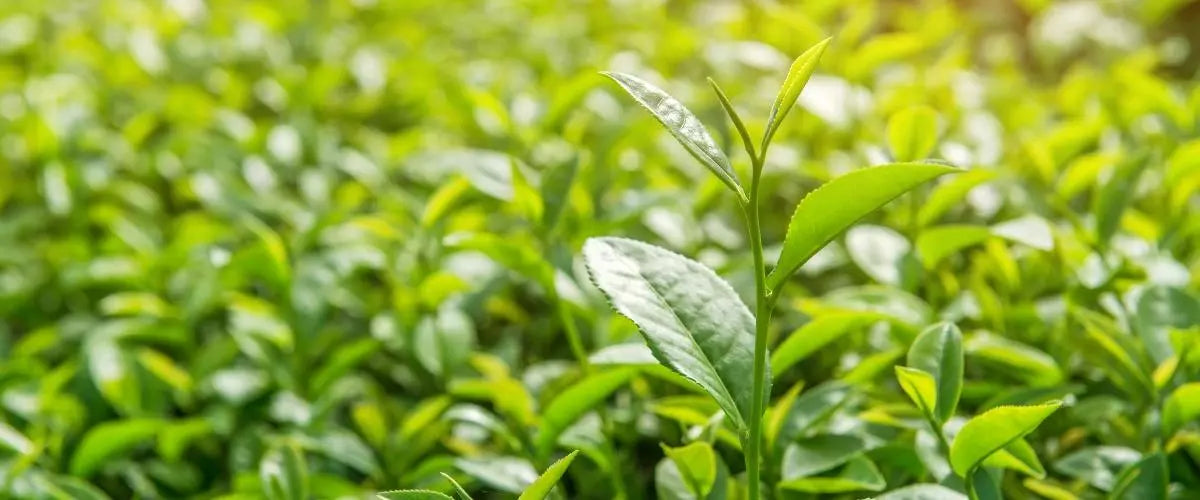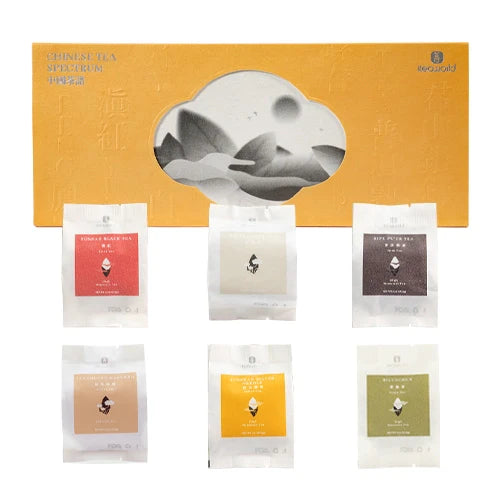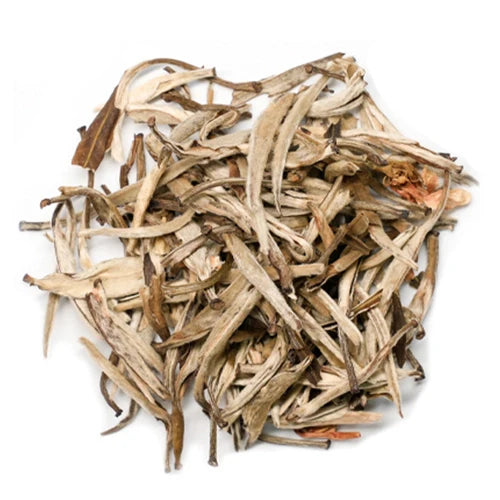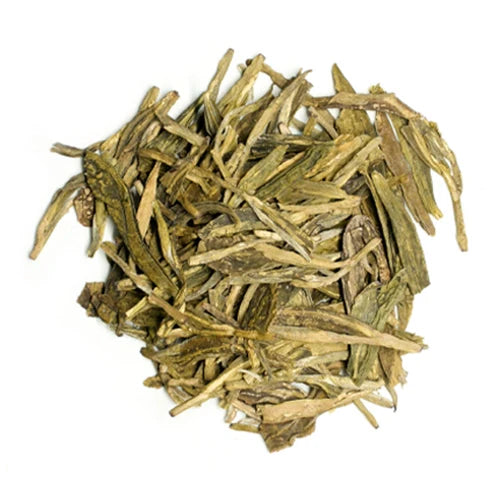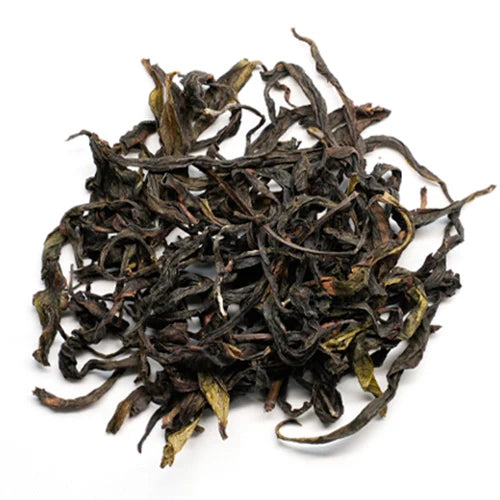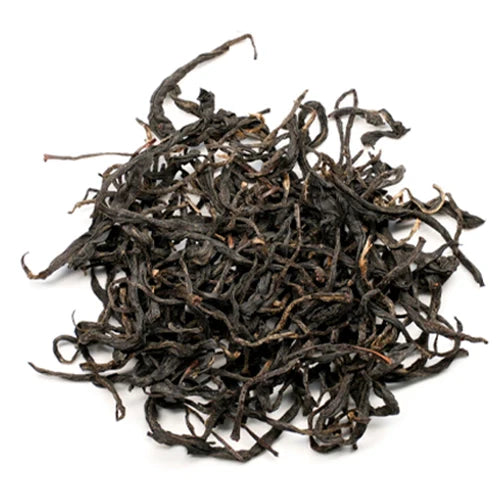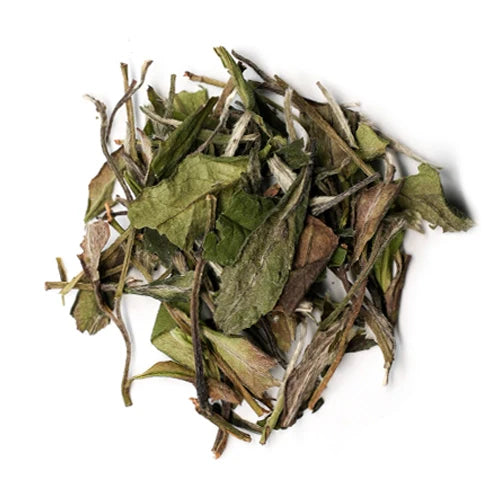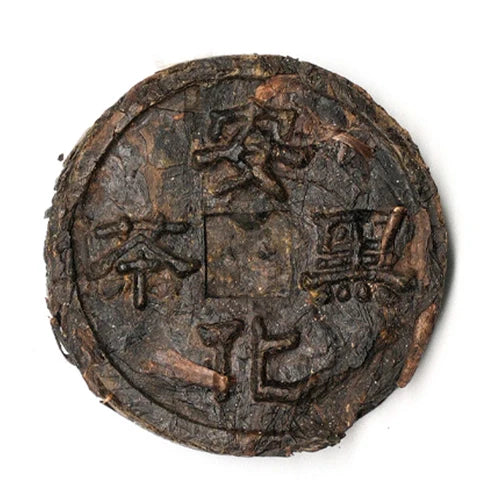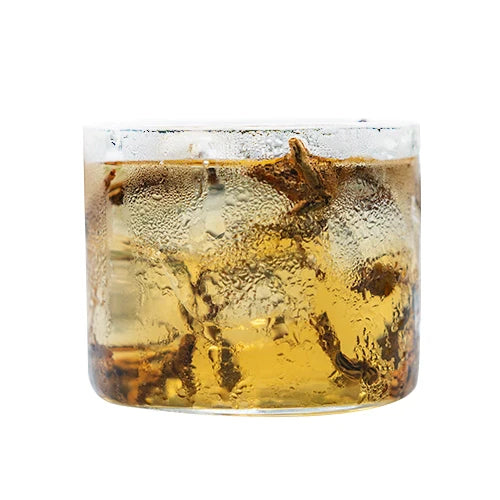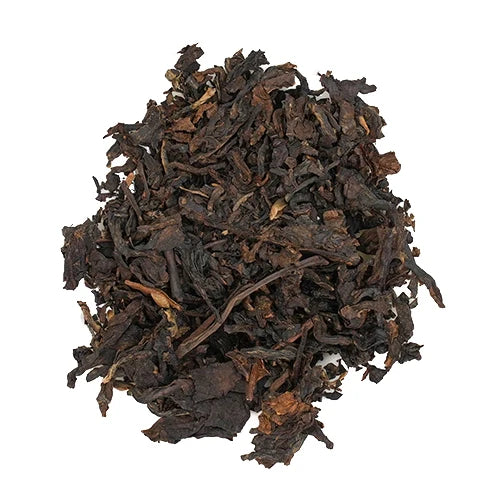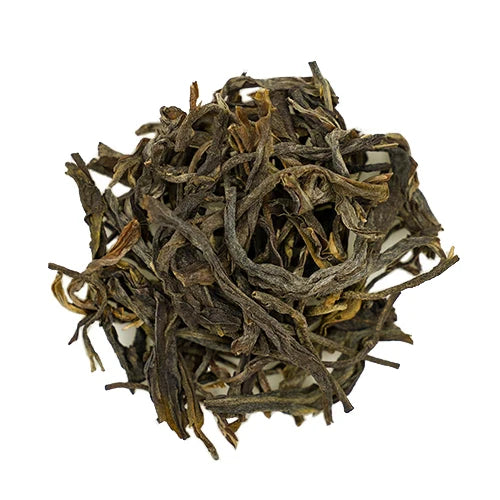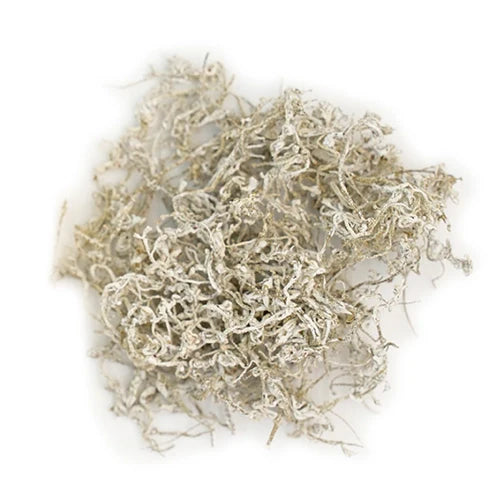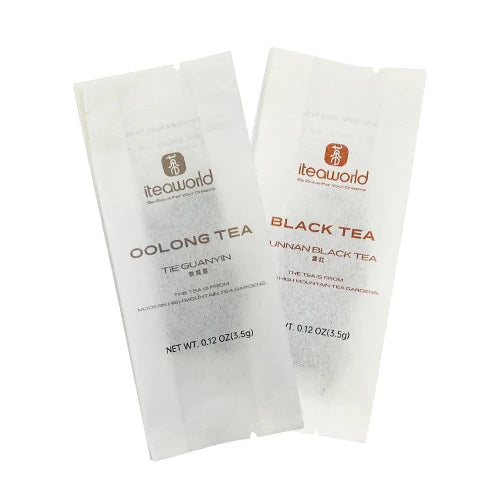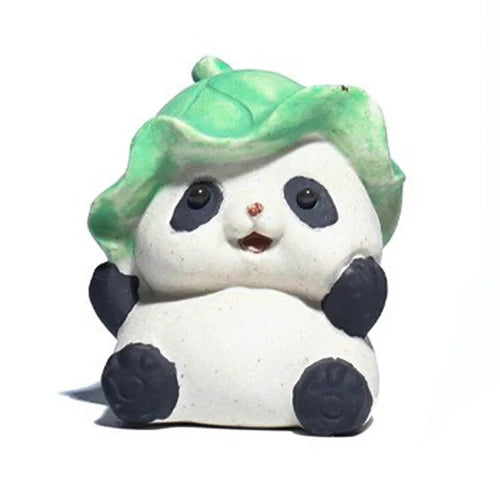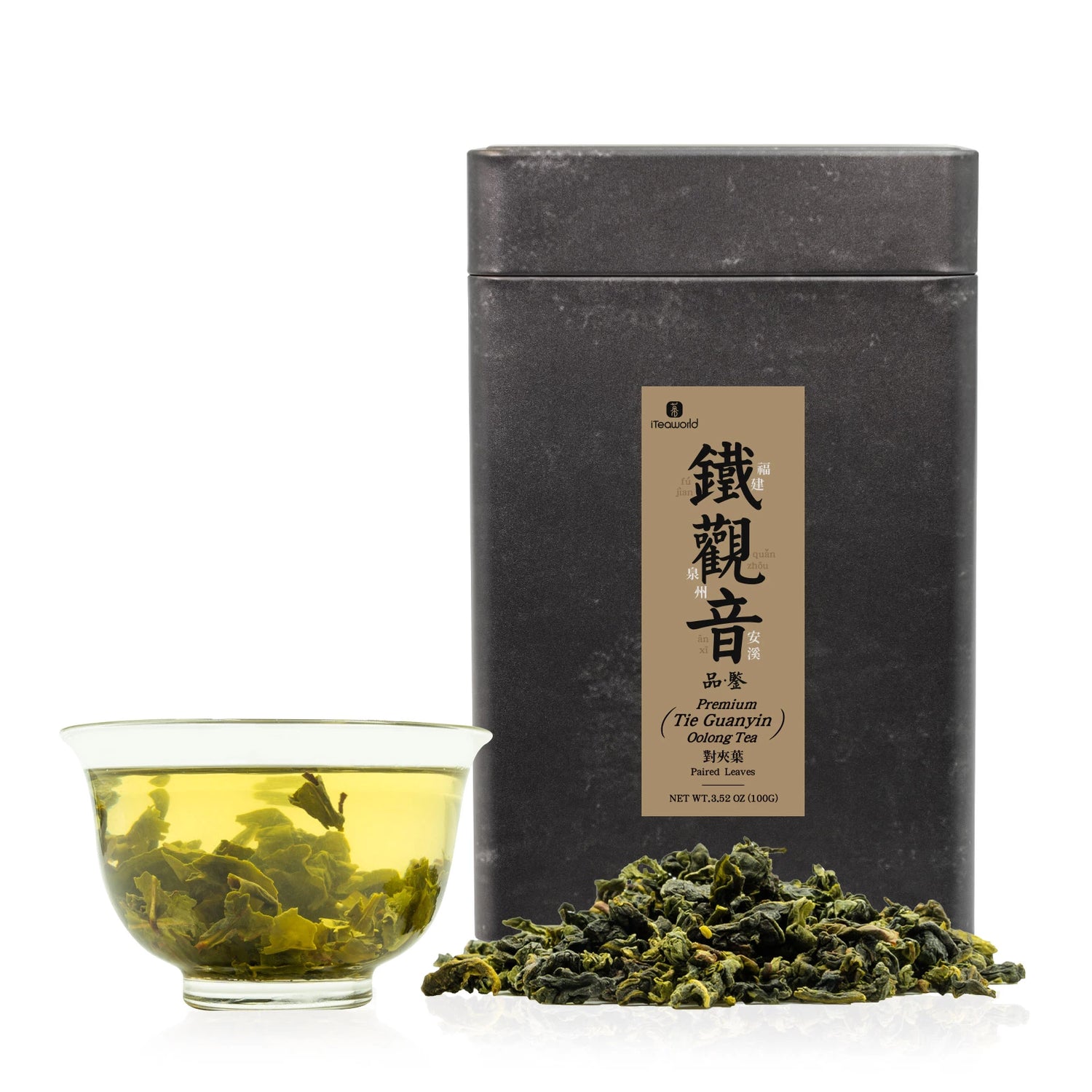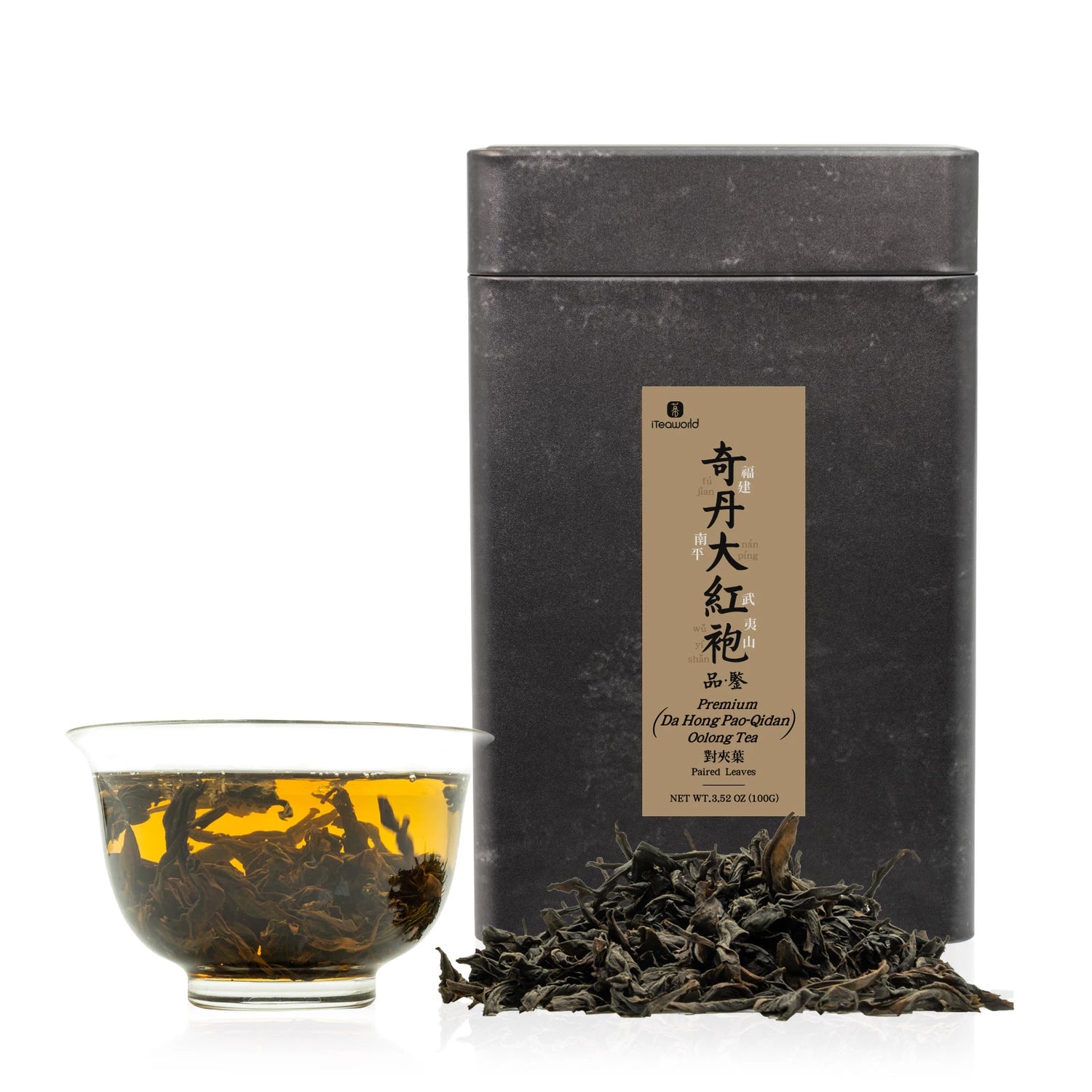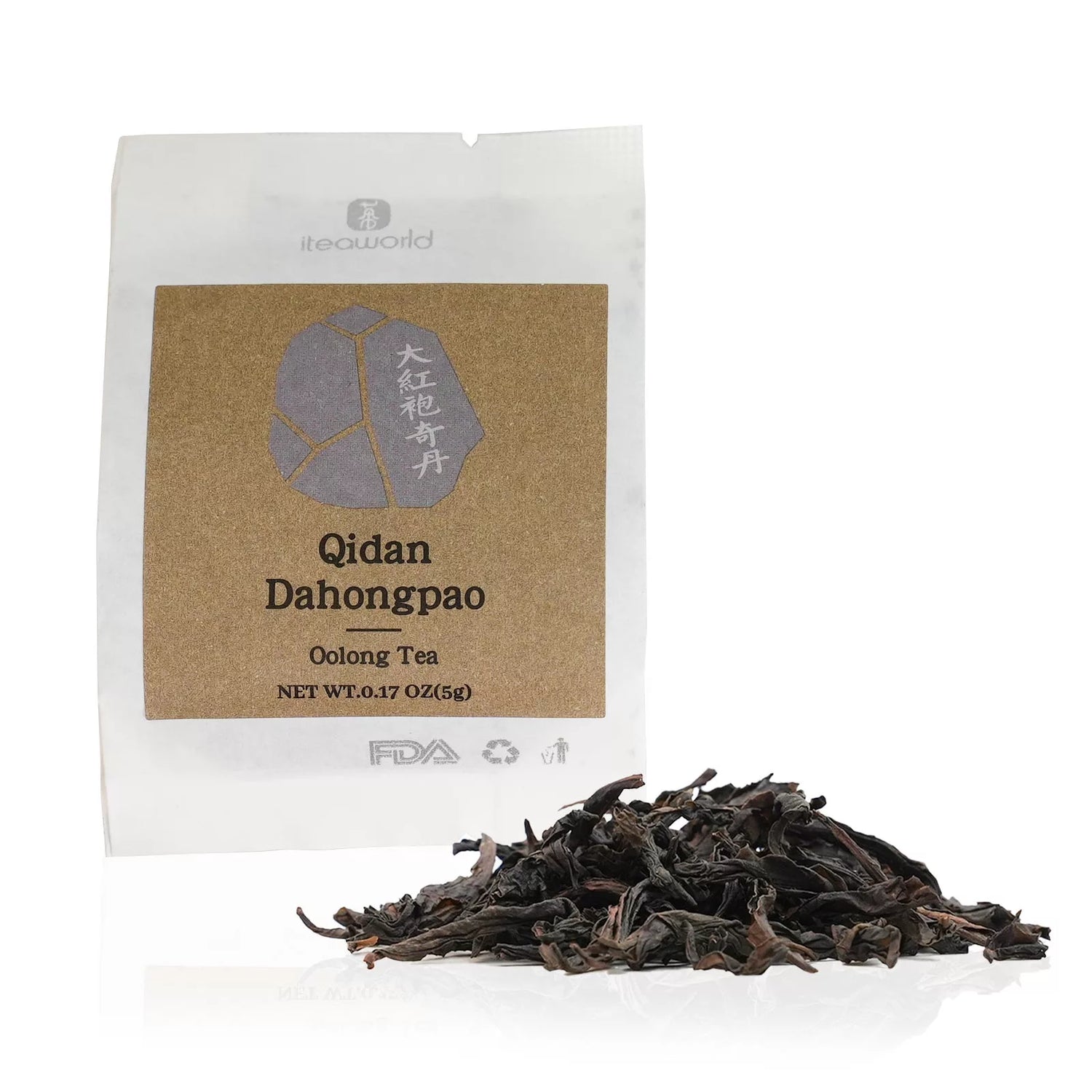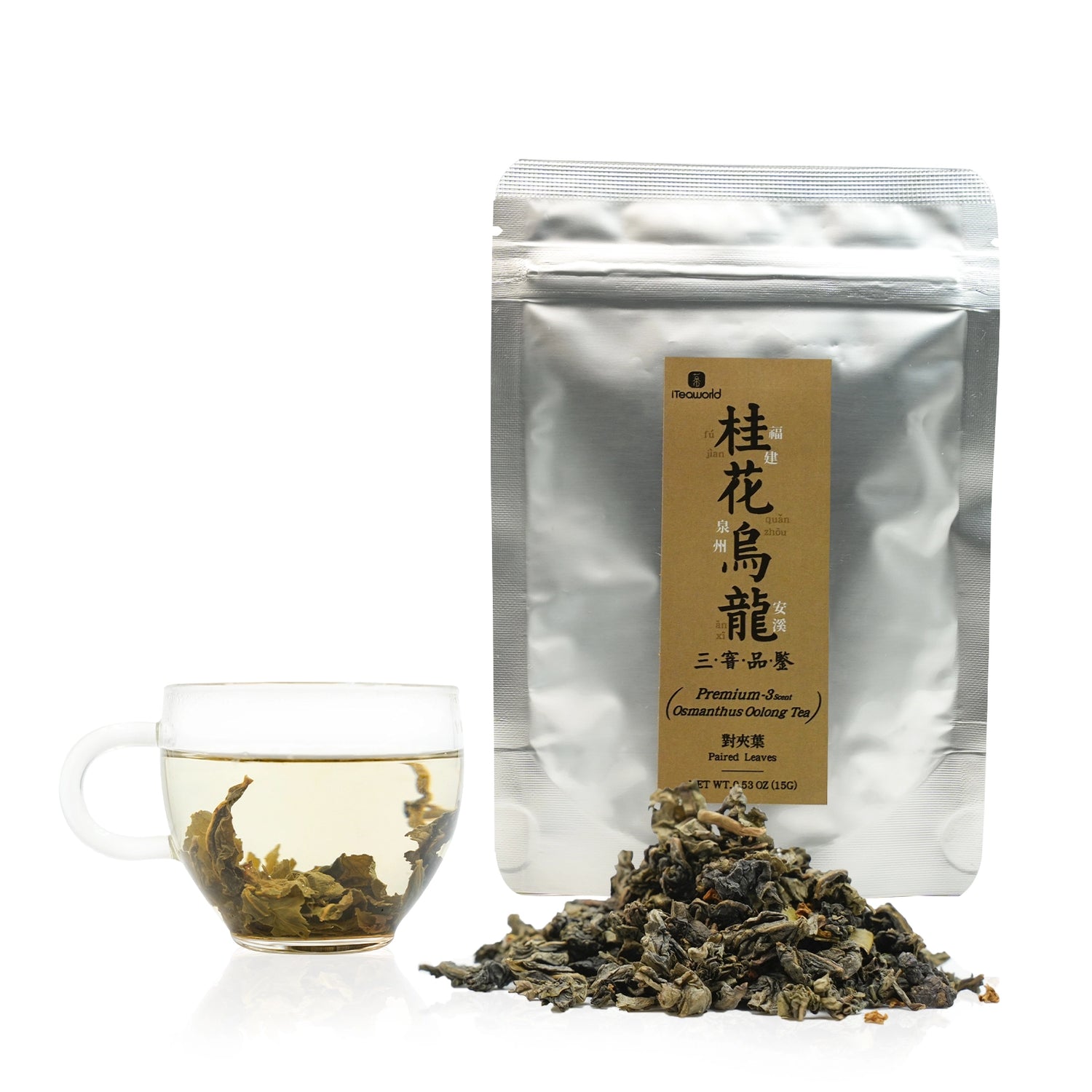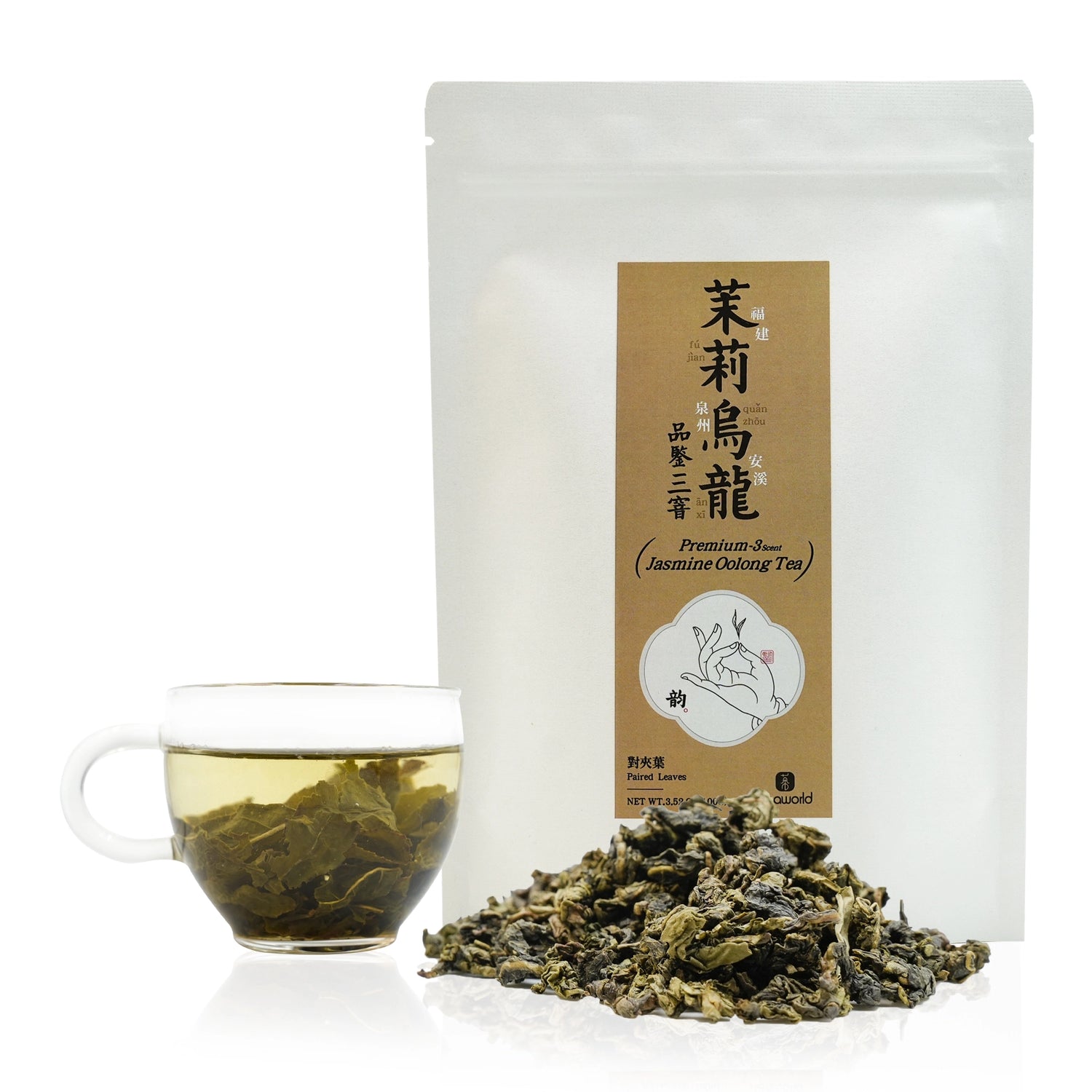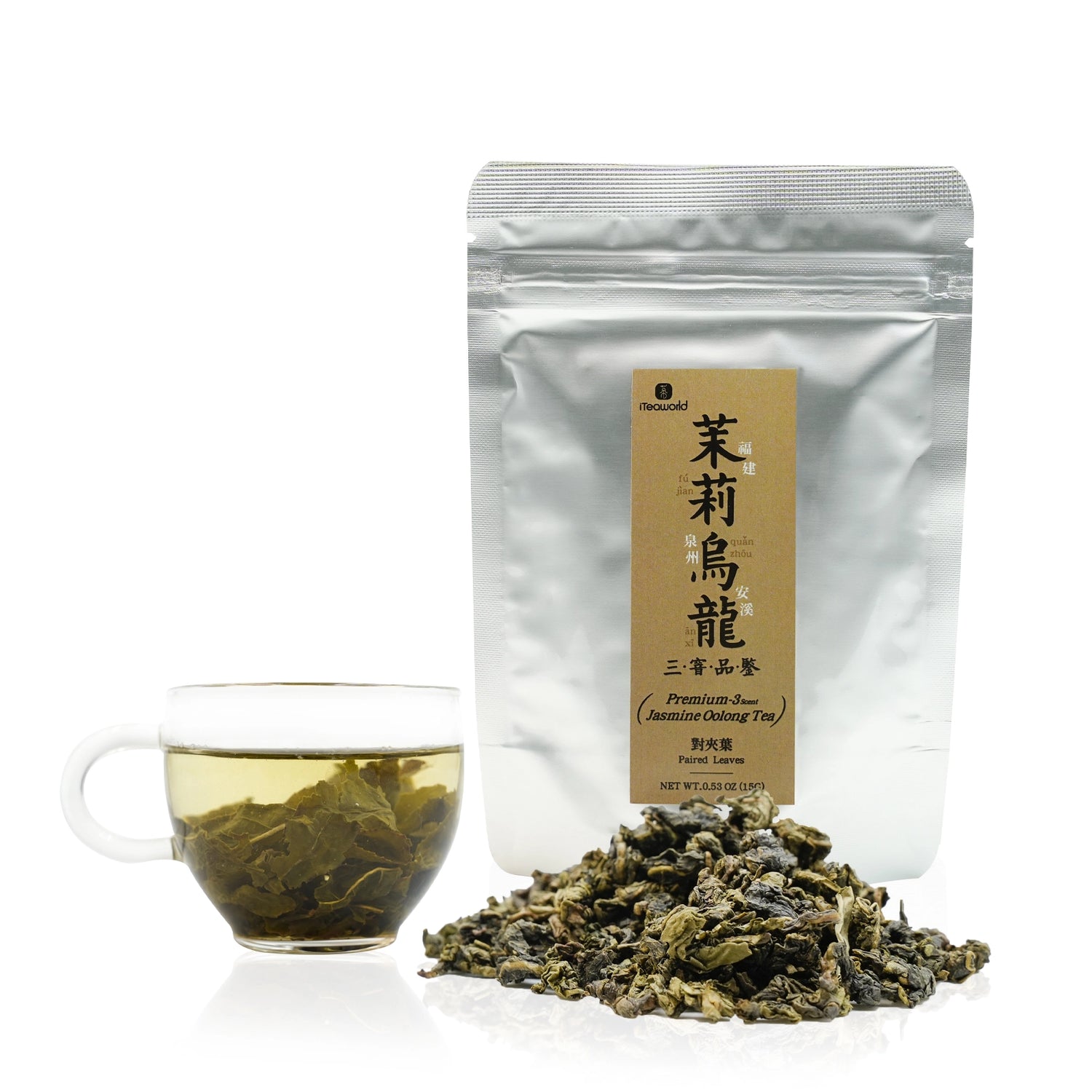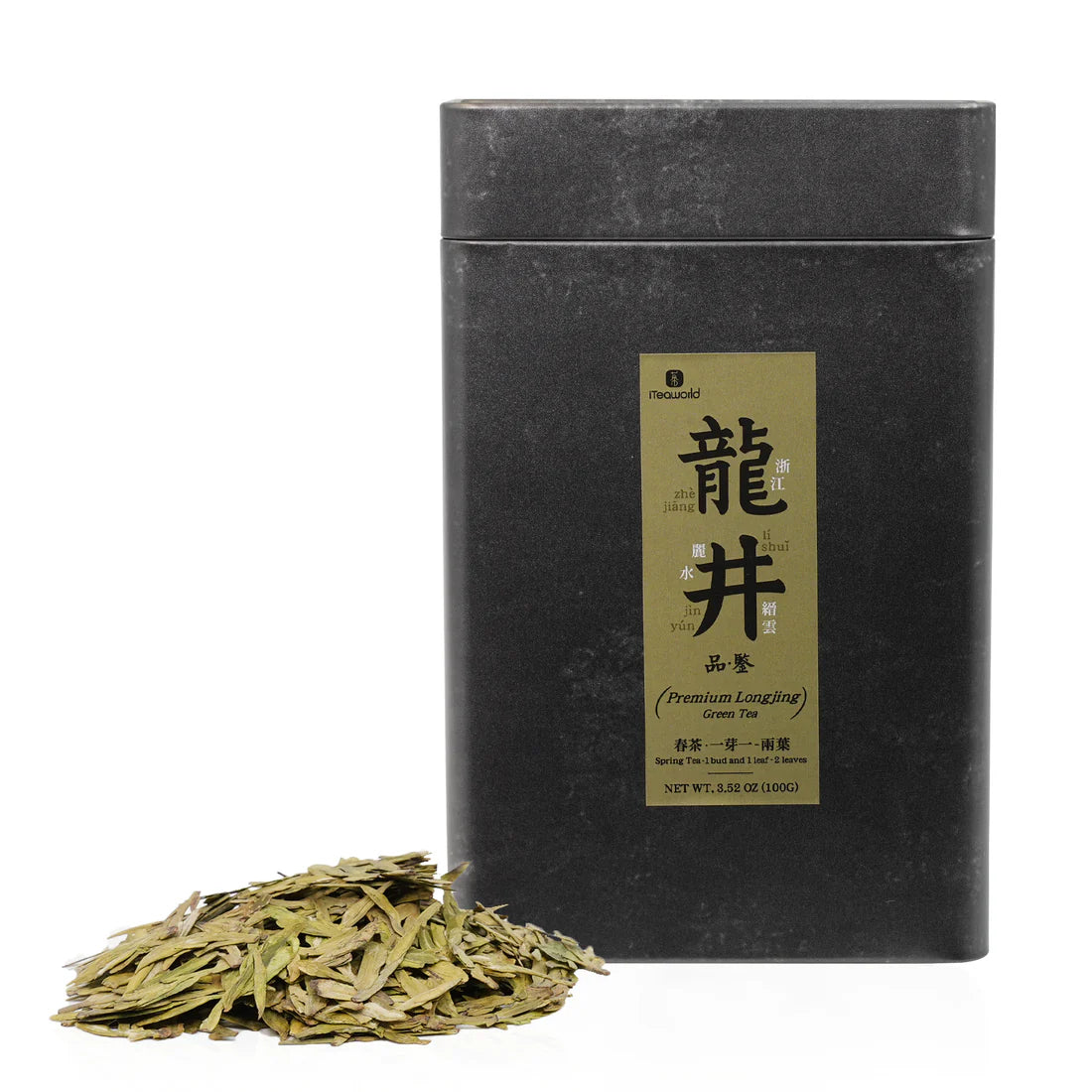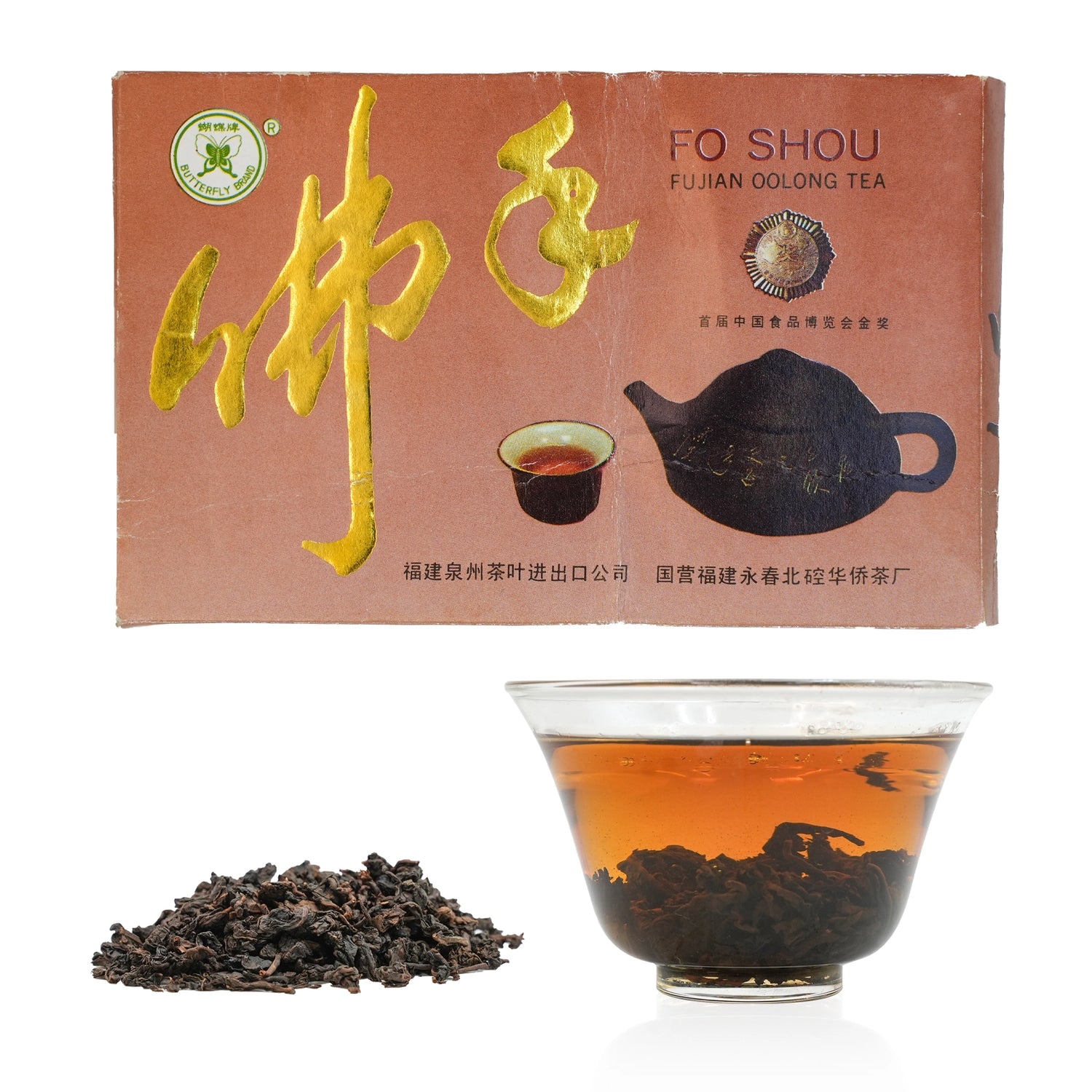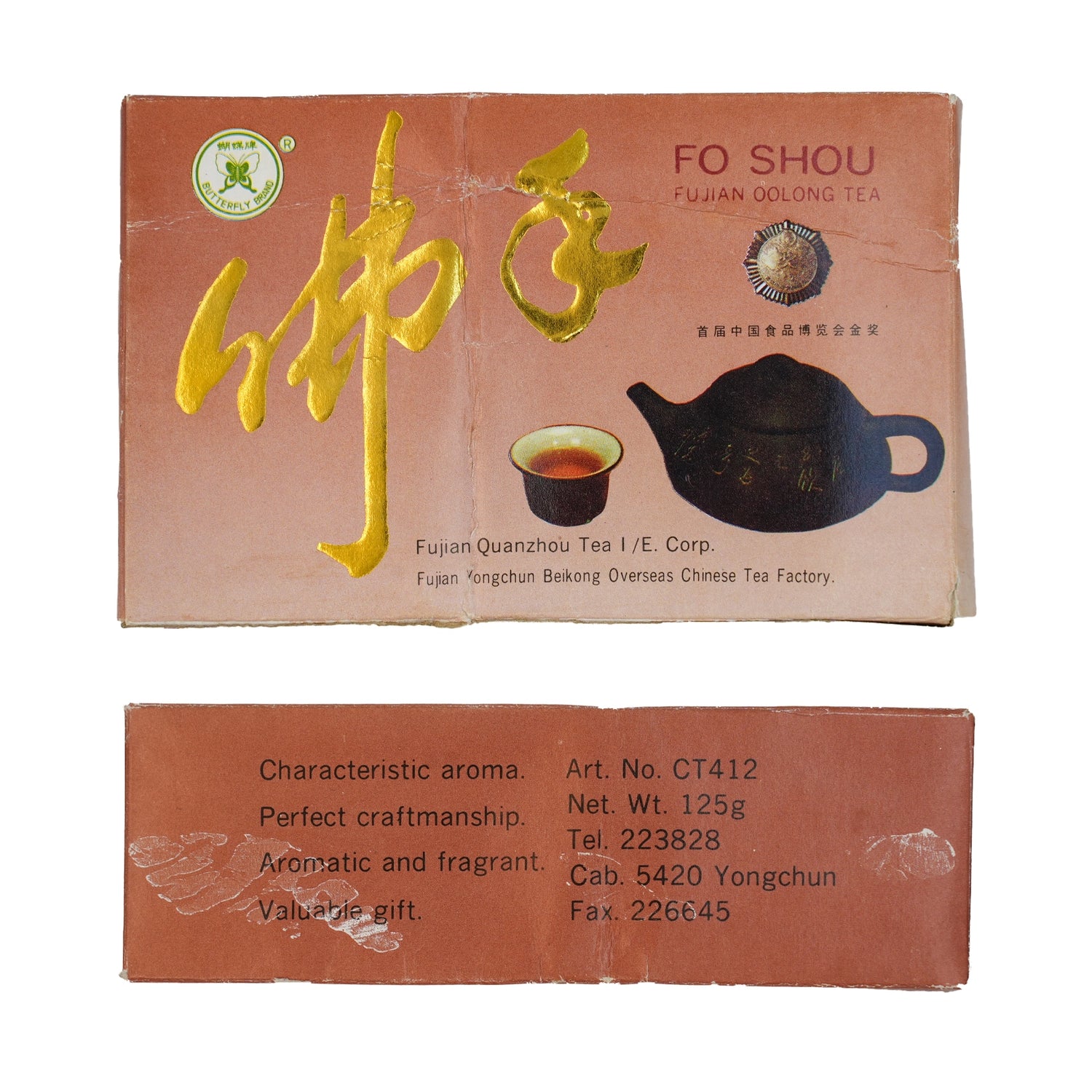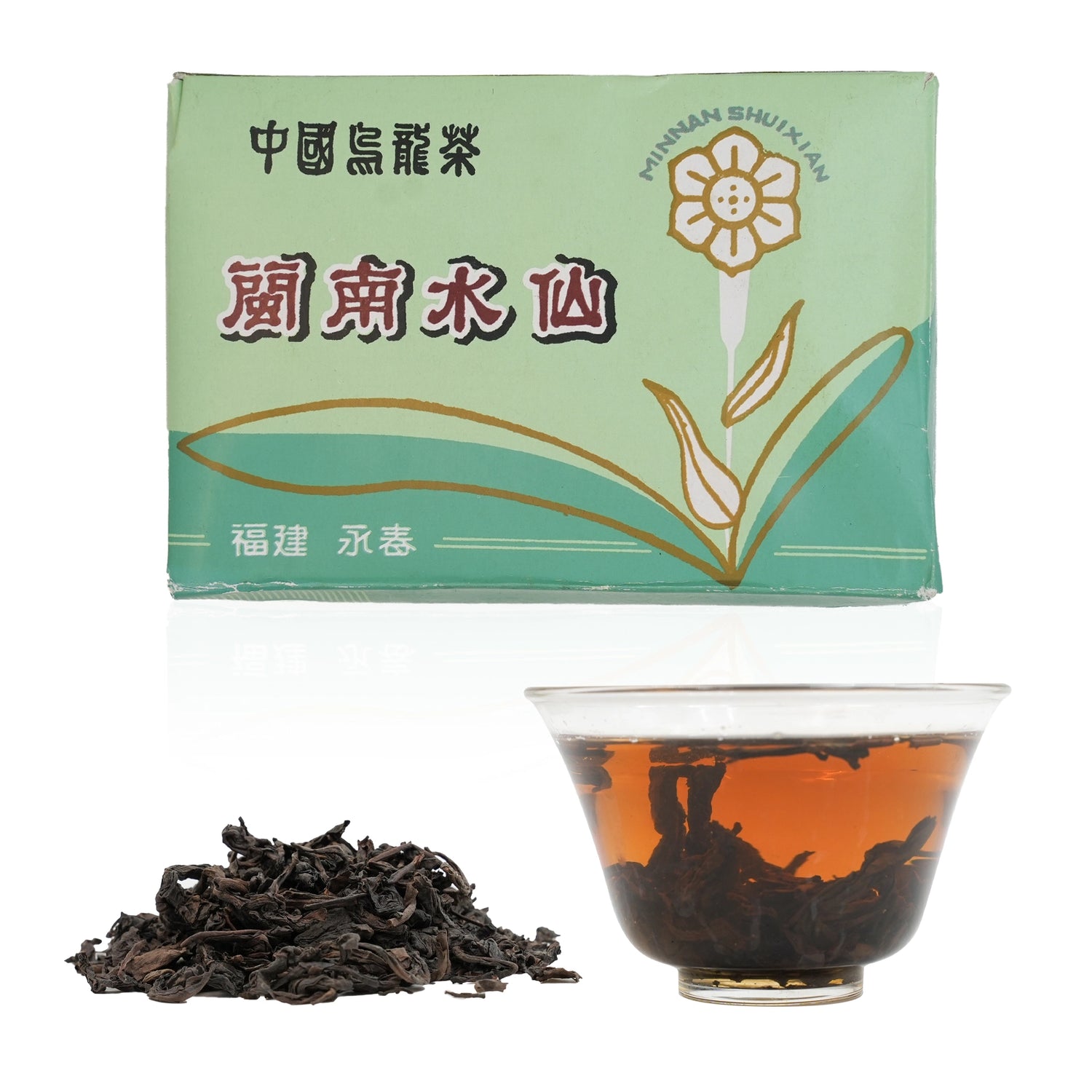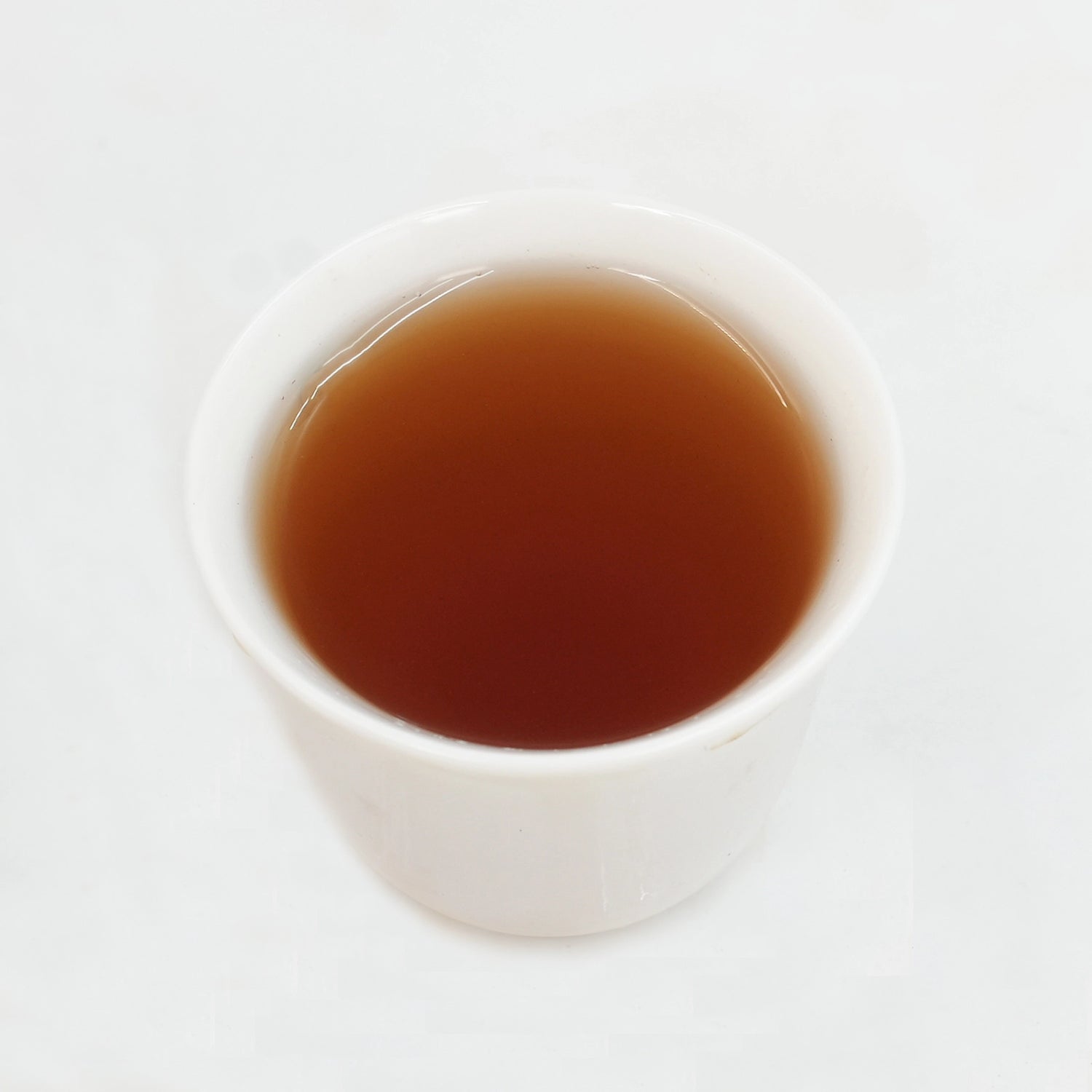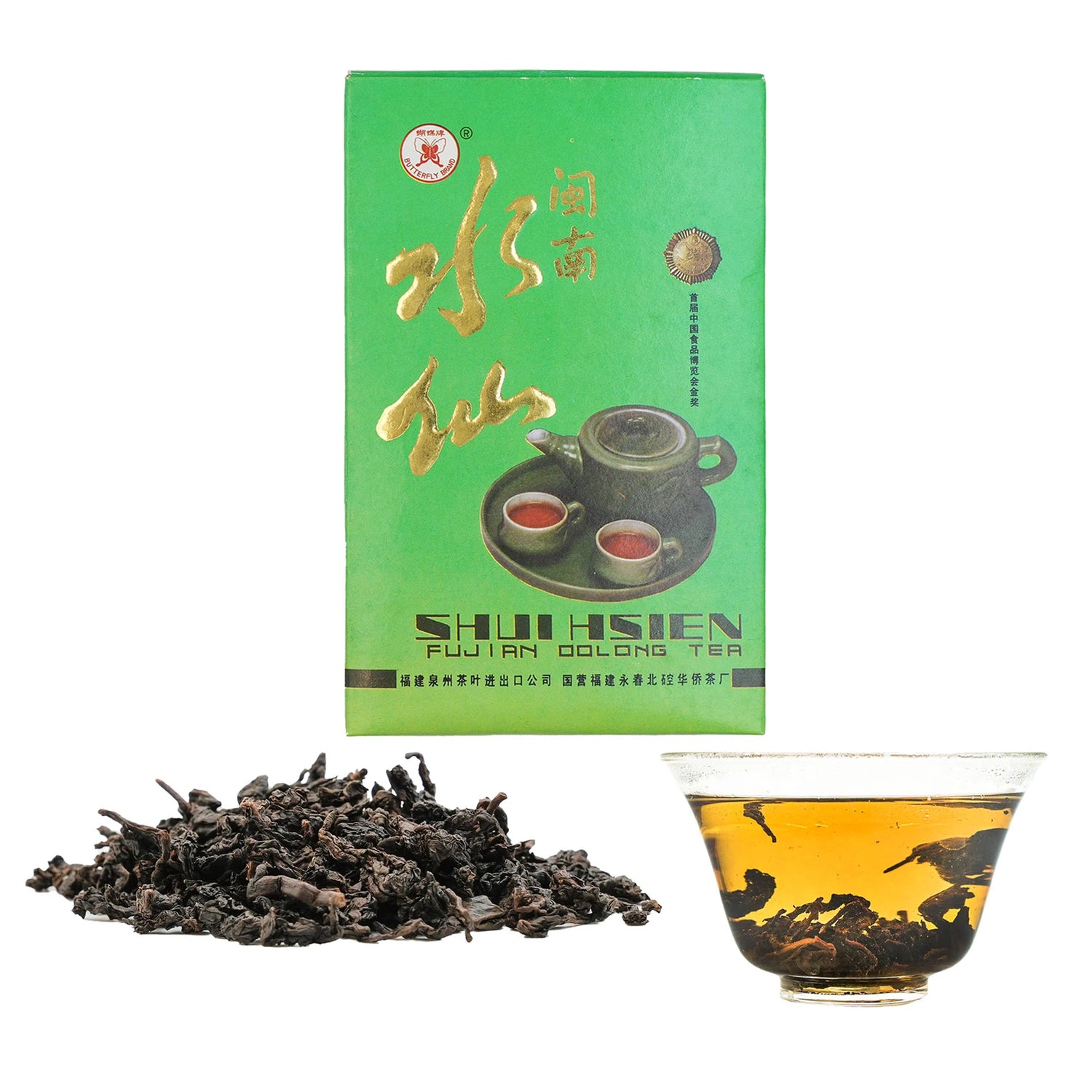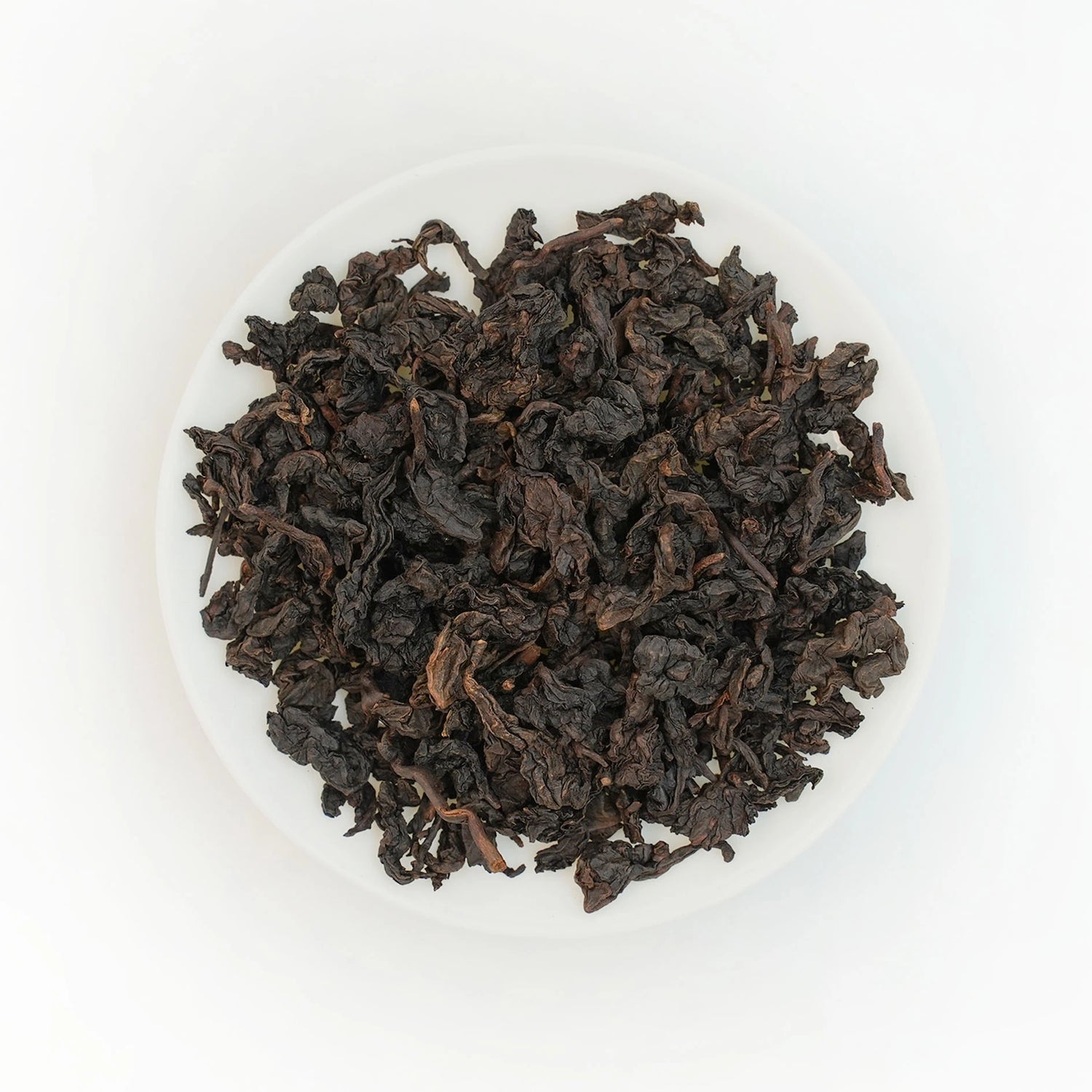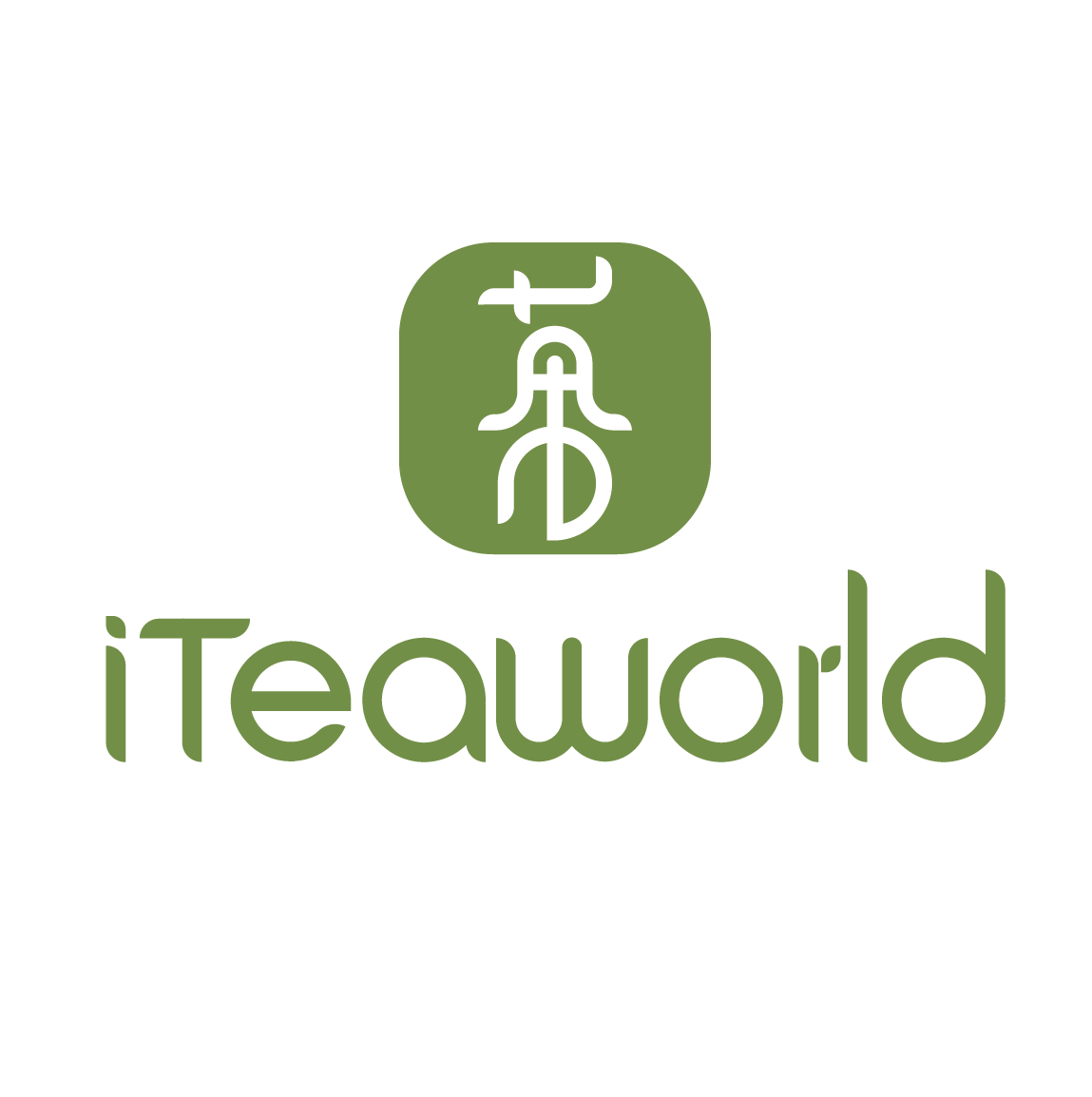Sort by:
71 products
71 products
Introduction:
This premium Tieguanyin is meticulously selected from the autumn harvest of 2023. Plucked from high-altitude tea gardens in Anxi, Fujian (the most authentic origin), the exceptional growing conditions impart a rich and robust flavor profile. Carefully crafted in small batches by professional tea farmers, this tea guarantees a smooth, mellow taste with a strong orchid fragrance.
Reasons to Recommend:
- A Renowned Chinese Tea: Anxi Tieguanyin, originating around 1725, is one of China's top ten famous teas. On May 22, 2023, Anxi Tieguanyin was awarded the "Globally Important Agricultural Heritage Systems" certificate.
- Authentic Origin: Grown in Anxi, Fujian, where the mountainous terrain and misty climate create an average annual temperature of 15-18°C, a frost-free period of 260-324 days, and annual rainfall of 1700-1900 mm. The relative humidity exceeds 78%, and the acidic red soil, rich in organic matter and minerals, contributes to the unique flavor of Tieguanyin tea trees.
- High-Altitude Tea Gardens: Compared to other Tieguanyin teas, this one is cultivated in high-altitude gardens in Anxi, where the superior climate enhances the tea's richness, delivering a smoother, sweeter aftertaste and a more intense aroma.
- Meticulous Craftsmanship: Carefully produced in small batches by skilled farmers, this tea undergoes multiple intricate processes to achieve its premium quality.
Oxidation Level: 15%-25%
Roasting Level: Light roast
Tea Garden Soil: Red soil
Processing Time: November 2024
Best Before Date: 36 months
Tea Variety: Tieguanyin
Introduction:
This Qidan Da Hong Pao is meticulously selected from the spring harvest of 2023. Sourced from the purest Wuyi rock tea in Wuyi Mountain, Fujian (the most authentic origin), the exceptional growing conditions and specific cultivar impart a truly authentic flavor profile. Crafted by master tea maker Chen Hai, who has decades of experience, this tea guarantees a rich, sweet aftertaste with a subtle osmanthus fragrance.
Reasons to Recommend:
- Core Production Area: Grown in the heart of Wuyi Mountain, Fujian, where the average annual temperature ranges from 16°C to 25°C, the frost-free period lasts 253-272 days, and annual rainfall is around 2000 mm. The relative humidity is 78%-84%, and the acidic red soil, rich in organic matter and minerals, contributes to the unique flavor of Da Hong Pao tea trees.
- Pure Cultivar: The mother trees of Da Hong Pao grow on the steep cliffs of Jiulongke in the Wuyi Mountain Nature Reserve. Due to their limited yield and exceptional quality, the purebred Da Hong Pao is propagated asexually from cuttings of these mother trees and processed separately.
- High-Altitude Tea Gardens: This tea is cultivated in high-altitude gardens in Wuyi Mountain, where the superior climate enhances the tea's richness, delivering a fuller, sweeter aftertaste and a more intense, lingering aroma with a pronounced "rock essence."
- Unique Roasting Process: Premium tea leaves are slowly roasted under gentle heat, developing a sweet fragrance with a subtle smoky undertone.
Oxidation Level: 45%-55%
Roasting Level: Light to medium roast
Tea Garden Soil: Sandy gravel soil
Master Blender: Chen Hai
Processing Time: Initial processing in May 2024, refined in September 2024
Best Before Date: 36 months
Tea Variety: Qidan
2024 Traditional Osmanthus Oolong
Who It’s For:
If you love teas with a deep, layered profile and long-lasting floral notes, this Osmanthus Oolong is a must-try. Crafted with a base of aged aromatic oolong tea and the fragrant blossoms of century-old osmanthus trees, this tea undergoes a meticulous three-round scenting process. The result? A rich, sweet brew where the floral elegance of osmanthus perfectly complements the tea’s mellow depth. Ideal for tea lovers who appreciate traditional crafting methods and unique floral teas. If you’re looking for rare and artisanal tea experiences, this one checks all the boxes.
Tea Details:
Origin: Fangting Village, Huqiu Town, Anxi County, Quanzhou, Fujian
Harvest Date: October 2024
Grade: First Grade (One bud, two leaves)
Tea Base: Aged aromatic oolong tea
Tea Cultivar: Tieguanyin
Tea Master: Chen Qizhi, a 30-year tea artisan
Flavor Profile: Bold and lasting osmanthus aroma, with the sweet, mellow body of aged oolong tea
What Makes It Special: Made with rare century-old osmanthus blossoms and aged oolong, this tea is meticulously scented three times for a truly exquisite experience.
Osmanthus Oolong Tea
Hailing from Anxi in Fujian, the birthplace of Tie Guan Yin Oolong, this Osmanthus Oolong tea is crafted with a unique traditional method that combines the finest Oolong tea leaves with fresh Osmanthus flowers. The process begins with carefully selecting tender Oolong tea leaves, which undergo a series of traditional steps, including withering, shaking to release the aroma (摇青), rolling, and initial drying. After the leaves are partially dried, fresh Osmanthus flowers are added during the final drying stages, allowing the natural floral fragrance to fully infuse into the tea leaves.
The result is a tea that beautifully blends the richness of Oolong with the delicate, sweet aroma of Osmanthus flowers. It combines the smooth, full-bodied taste of black tea with the refreshing, light qualities of green tea, creating a perfect balance of bold and delicate flavors. This Osmanthus Oolong is ideal for anyone who enjoys a complex yet soothing tea with a unique floral twist.
How to brew:
Water Temp: 212°F(or 100℃)
Tea-to-Water: 1g per 20ml
Steep Time: Discard the first steep; 20 sec for 2nd–4th steeps, add 5 sec each time after
Teaware: White porcelain gaiwan or clay teapot
Re-Steep: 5-7 times
2024 Jasmine Tieguanyin Oolong
Who It’s For:
Light, refreshing, and perfectly balanced, this Jasmine Tieguanyin Oolong is for tea lovers who enjoy subtle floral notes and a creamy, smooth finish. The lightly fermented Tieguanyin tea base is scented three times with fresh jasmine flowers, resulting in a tea that is delicate, buttery, and reminiscent of a serene garden. Best for those seeking a gentle, floral oolong rather than bold or heavy teas.
Tea Details:
Origin: Fangting Village, Huqiu Town, Anxi County, Quanzhou, Fujian
Harvest Date: September 2024
Scenting Rounds: 3 rounds
Tea Base: Fragrant-style Tieguanyin oolong
Tea Cultivar: Tieguanyin
Flavor Profile: Clean and fresh jasmine aroma, silky smooth texture, with a creamy mouthfeel.
What Makes It Special: The perfect marriage of jasmine’s uplifting scent and Tieguanyin’s velvety smoothness, offering a truly luxurious yet refreshing tea experience.
How to Brew
Water Temp: 212°F(or 100℃)
Tea-to-Water: 1g per 20ml
Steep Time: 30 sec for first 3 steeps, add 5 sec each time after
Teaware: White porcelain gaiwan or clay teapot
Re-Steep: 5-7 times
Jasmine Oolong Tea
Authentic Jasmine Oolong is a premium tea that combines the fresh, fragrant notes of Jasmine flowers with the smooth, rich flavor of Oolong tea. The process involves carefully blending freshly bloomed Jasmine flowers with Oolong tea leaves during the drying stage, allowing the tea to absorb the flower's natural fragrance. The more times the tea is scented with Jasmine flowers, the more intense and aromatic the floral notes become. After the scenting process, the tea is dried again to lock in that fresh, vibrant Jasmine aroma.
For the best flavor, Jasmine Oolong is typically made with high-quality, lightly fragrant Tie Guan Yin Oolong tea leaves, harvested during the summer or autumn season. The result is a tea that’s perfectly balanced: the fresh, lively Jasmine fragrance mingles seamlessly with the smooth, creamy taste of Oolong. It’s like stepping into a garden full of blooming Jasmine flowers, where the sweet floral notes and the smooth, sweet tea create a refreshing, comforting experience in every sip.
This Jasmine Oolong tea is perfect for anyone who enjoys a balance of light floral notes with a rich, smooth finish—ideal for any time of day when you're craving something fragrant and refreshing.
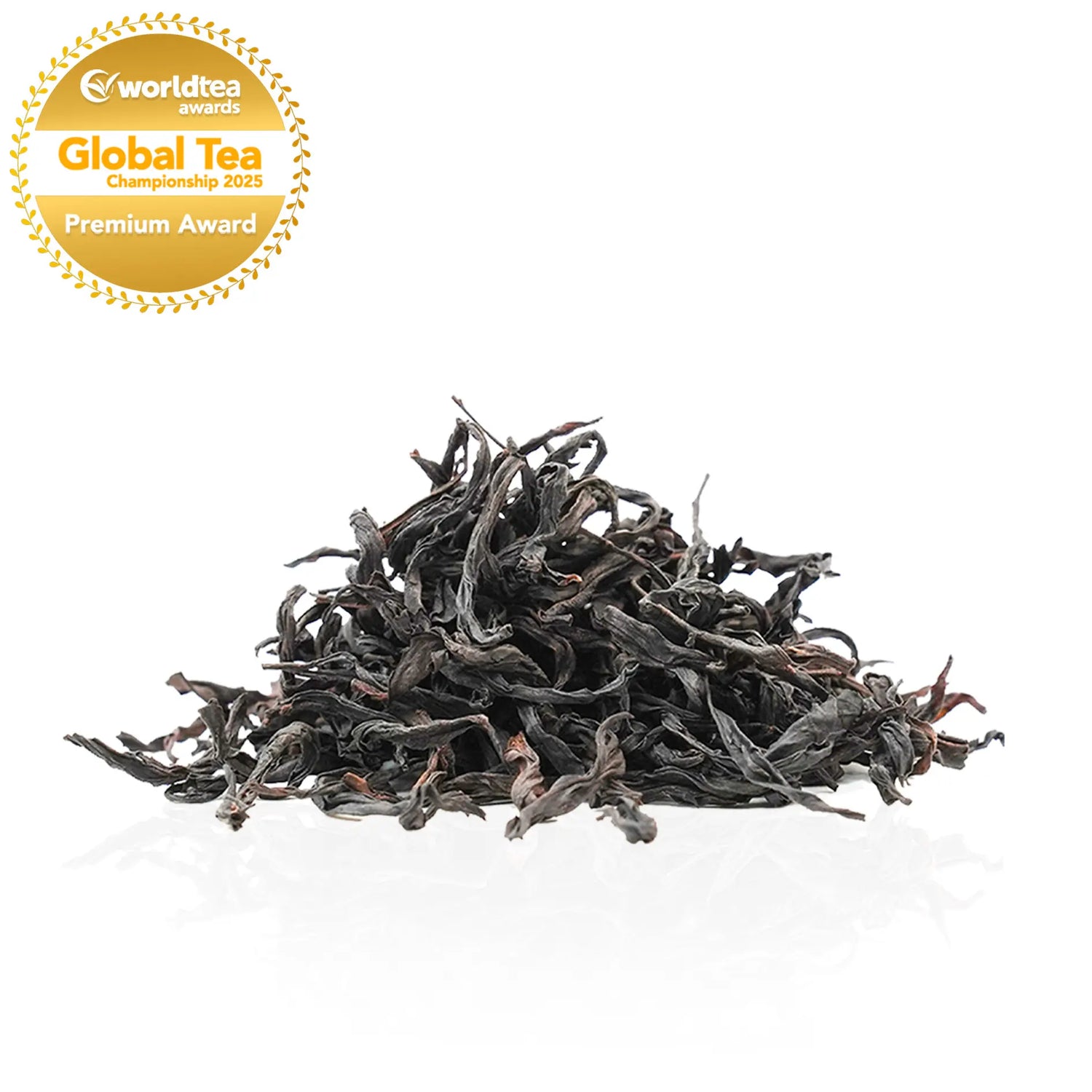
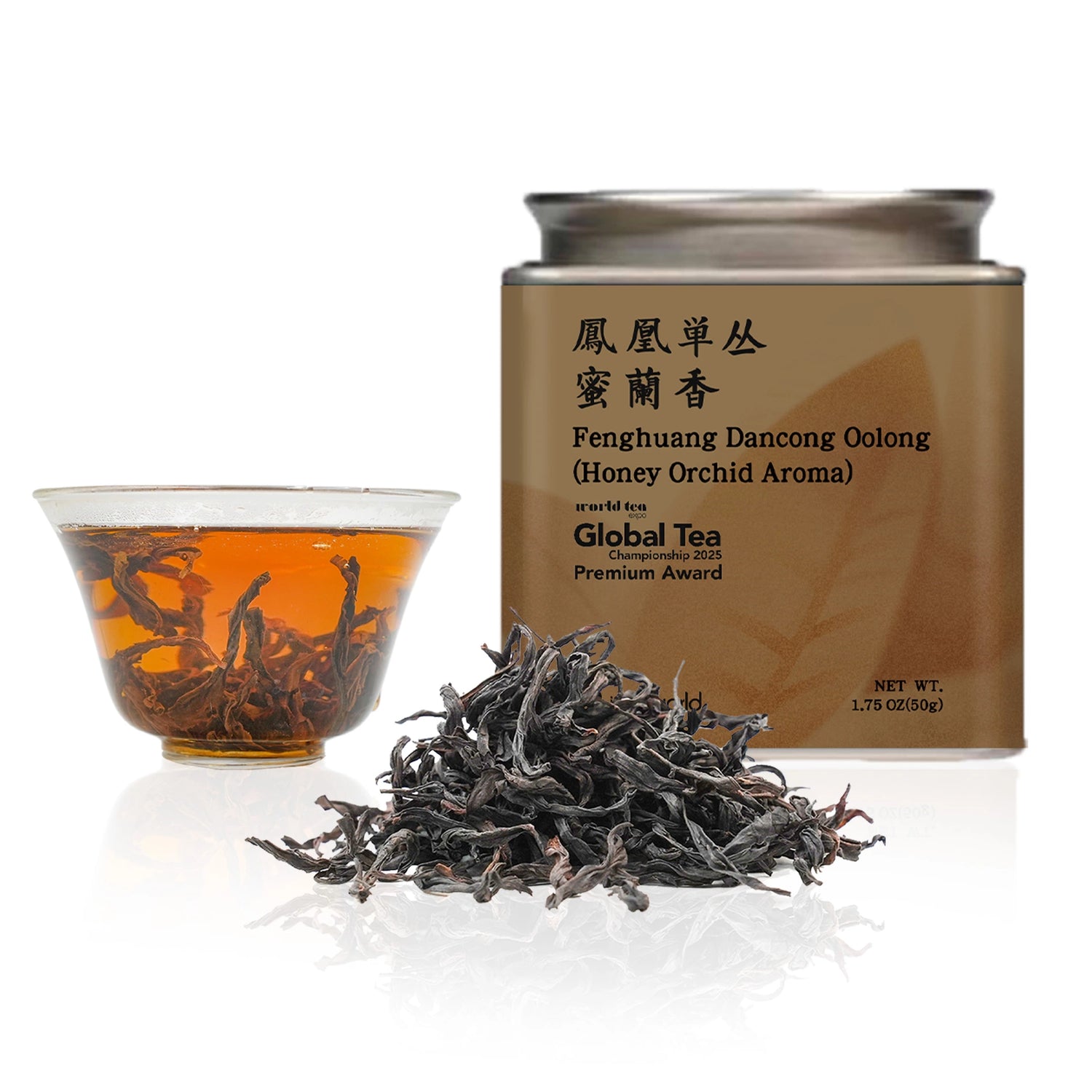
GTC 2025 Winner - Best Oolong: Iteaworld Mi Lan Xiang Dan Cong 50g
GTC 2025 Winner - Best Oolong: Iteaworld Mi Lan Xiang Dan Cong 50g
Aged Tree Phoenix Dancong - Honey Orchid Aroma
Winner of the 2025 World Tea Expo - Best Oolong Tea
Expected shipping around April 15-20
-
Tea Master: Chen Tianjin(陈添锦)
-
Tea Variety: Honey Orchid (Mi Lan Xiang)
-
Origin: Da’an Village, Fenghuang Town, Guangdong – 1000m elevation, core Phoenix Dancong terroir
-
Tree Age: 50-70 years
-
Harvest Time: May 2024
-
Oxidation Level: 35-40%
-
Roasting: Traditional triple charcoal roasting
-
1st roast (June 2024): 80-90°C
-
2nd roast (August 2024): 100-105°C
-
3rd roast (October 2024): 90-100°C
-
A Rare Expression of Phoenix Dancong
Sourced from Da’an Village, one of the most prestigious Phoenix Dancong growing areas, this tea comes from ancient trees 50-70 years old. Nestled in the Wu Dong Mountain range (985m-1100m elevation), this region has a 700-year-old tea-making tradition, with traditional charcoal roasting.
Why Ancient Tree Honey Orchid?
-
Incredible Longevity: Can be brewed 15+ times while maintaining full-bodied flavor
-
Richer, More Complex Aroma: Ancient trees absorb more nutrients, producing tea with intense floral fragrance and lingering sweetness
-
Deeper, Fuller Taste: Higher levels of polyphenols and amino acids create a smooth, thick mouthfeel with a strong returning sweetness
Traditional Charcoal Roasting – A True Connoisseur’s Choice
Unlike electric roasting, charcoal roasting enhances aroma and depth, removing any bitterness while preserving the tea’s unique characteristics. The process allows the leaves to absorb negative ions and far-infrared energy, creating a deeper, more complex roasted note.
Additionally, charcoal-roasted Dancong:
-
Ages gracefully, developing richer flavors over time
-
Has lower moisture content, making it easier to store
-
Requires multiple rounds of small-batch roasting to ensure perfect consistency
The result? A tea that is visually stunning, rich in flavor, highly aromatic, and naturally sweet—a stark contrast to the mild taste and cloudy appearance of electrically roasted teas.
During the aging and transportation process of aged tea, the packaging and the tea itself may get damaged. Please be cautious when purchasing if you mind this.
Recommended Purchase
This Yongchun Fo Shou Oolong tea, produced in 1993 and naturally aged in dry storage for 33 years, is made from the Yongchun Fo Shou variety, a well-known tea type from Yongchun, Fujian Province. It was crafted by the Yongchun Beikong Overseas Chinese Tea Factory, established in 1917. This tea is handcrafted with traditional full-heat roasting and comes in its original packaging. No longer available on the market, it features a unique "aged aroma", rich sweetness and smooth texture, making it a cherished choice for lovers of aged Oolong tea.
Key Details about 1993 Yongchun Fo Shou
- Origin: Yongchun, Fujian Province, China
- Production Date : 1993
- Grade: Special Grade
- Tea Cultivar: Yongchun Fo Shou
- Craftsmanship : Traditional high-fire roasting with medium fermentation, followed by 33 years of natural dry storage in sealed outer box with an inner foil bag.
- Flavor Highlights: Warm "aged aroma" with notes of roasted nuts, complex layers of aged flavors.
What is Yongchun Fo Shou Oolong Tea?
Yongchun Fo Shou, also known as "Buddha’s Hand," is a premium variety of oolong tea grown in Yongchun, Fujian. Named after its leaves that resemble a Buddha’s hand, Yongchun Fo Shou is celebrated for its fragrant aroma, smooth taste, and exceptional aging potential. The tea is lightly twisted into a "dragonfly head" shape, with dark blackish-brown leaves indicative of traditional craftsmanship.
Brewing and Enjoyment Tips
This tea is a testament to the transformative effects of time, offering a rich, smooth, and slightly tangy flavor profile. Best enjoyed with long steeping times or simmering to fully release its aged characteristics.
Recommended Brewing Methods:
-
Gaiwan Brewing:
- 100ml Gaiwan
- 95℃-100℃
- 5-7 times
- 1:15 to 1:25
- 10~20 seconds
-
Thermos Brewing:
- 1g tea per 100ml (3.4oz) water.
- Use boiling water (212°F).
- Steeping Time: 1-2 hours.
- Tool: Insulated thermos.
-
Boiling Method:
- Add 1g tea per 100ml (3.4oz) water.
- Boil for 1-2 minutes, then let sit for 2-3 minutes.
- Rebrew by boiling 3 minutes longer with each steeping.
- Use a ceramic or glass teapot for optimal flavor.
- Enjoy up to 3-4 brews.
Storage Guidelines
Store this tea in a dry, cool environment with a humidity level below 45% and temperature below 25°C (77°F). Keep it away from strong odors, light, and air exposure. Proper storage ensures the tea retains its flavor and continues to age gracefully over time.
Weight
- 4.4oz (125g)
- Packing Type : Sealed Paper Box with Internal Foil Bag
About Yongchun Beikeng Overseas Chinese Tea Factory
Founded in 1917, the Yongchun Beikeng Tea Factory has a rich history of producing high-quality teas. Once a bustling hub of innovation and craftsmanship, the factory was home to over 1,000 tea workers at its peak, producing millions of pounds of tea annually. Its products, including Yongchun Fo Shou, were highly sought after in Hong Kong, Taiwan, Japan, and Southeast Asia.
Just as many state-owned old factories have experienced ups and downs, in the 1990s, the tea factory once fell into a slump, and the once bustling factory area gradually became desolate. The former factory director, Huang Shenghou, who had created its greatest glory and witnessed its decline, was deeply saddened by its decline and took over the factory himself after privatization.
Today, this aged Yongchun Fo Shou tea stands as a flavorful tribute to the factory's storied past and the enduring legacy of traditional Chinese tea-making.
Recommended Purchase
This 1993 Aged Min Nan Shui Xian Oolong Tea is crafted from the Shui Xian tea cultivar, grown in Fujian, China. Produced by the renowned Yongchun Beikeng Overseas Chinese Tea Factory, which was established in 1917. This tea has been naturally aged in dry storage for 33 years, developing a unique blend of sweet aged aroma and medicinal fragrance. With a smooth, thick mouthfeel and a lingering sweetness, it is ideal for those who appreciate the depth of aged teas. The traditional high-temperature roasting and medium oxidation enhance its warming characteristics. This product is in its original packaging and is no longer in circulation on the market.
Key Details about 1993 Aged Min Nan Shui Xian
Origin: Yongchun, Fujian Province, China
Production Date: 1993
Grade: Second Grade
Tea Cultivar: Shui Xian
Craftsmanship: Traditional high-fire roasting, medium oxidation, light rolling
Flavor Highlights: Sweet aged aroma with medicinal fragrance, thick and smooth taste, long-lasting aftertaste
Storage: Naturally dry-aged, sealed packaging for optimal preservation
What is Min Nan Shui Xian Oolong Tea?
Min Nan Shui Xian is a Southern Fujian-style Oolong tea, known for its rich fragrance, mellow body, and lasting sweetness. Compared to Wuyi Shui Xian, it undergoes less oxidation, resulting in a softer and smoother profile. After decades of aging, this 1993 batch has developed an aged sweetness, medicinal notes, and a thick, velvety texture, making it a highly sought-after selection among aged tea connoisseurs.
Recommended Brewing Methods:
Gaiwan Brewing:
100ml Gaiwan
95℃-100℃
5-7 times
1:15 to 1:25
10~20 seconds
Thermos Brewing :
1g tea per 100ml (3.4oz) water.
Use boiling water (212°F).
Steeping Time: 1-2 hours.
Tool: Insulated thermos.
Boiling Method :
Add 1g tea per 100ml (3.4oz) water.
Boil for 1-2 minutes, then let sit for 2-3 minutes.
Rebrew by boiling 3 minutes longer with each steeping.
Use a ceramic or glass teapot for optimal flavor.
Enjoy up to 3-4 brews.
Storage Guidelines
Store this tea in a dry, cool environment with a humidity level below 45% and temperature below 25°C (77°F). Keep it away from strong odors, light, and air exposure. Proper storage ensures the tea retains its flavor and continues to age gracefully over time.
Weight & Packaging
Net Weight: 100g (3.5oz)
Packing Type: Original sealed paper box with inner aluminum foil bag
About Yongchun Beikeng Overseas Chinese Tea Factory
Founded in 1917, the Yongchun Beikeng Tea Factory has a rich history of producing high-quality teas. Once a bustling hub of innovation and craftsmanship, the factory was home to over 1,000 tea workers at its peak, producing millions of pounds of tea annually. The factory's products, including Min Nan Shui Xian, were highly sought after in Hong Kong, Taiwan, Japan, and Southeast Asia.
Just as many state-owned old factories have experienced ups and downs, in the 1990s, the tea factory once fell into a slump, and the once bustling factory area gradually became desolate. The former factory director, Huang Shenghou, who had created its greatest glory and witnessed its decline, couldn't bear to see it and took over the factory personally after its privatization.
Today, this aged Min Nan Shui Xian Oolong tea stands as a flavorful tribute to the factory's storied past and the enduring legacy of traditional Chinese tea-making.
During the aging and transportation process of aged tea, the packaging and the tea itself may get damaged. Please be cautious when purchasing if you mind this.
Recommended Purchase
This 1996 Aged Dancong Shui Xian Oolong Tea is crafted from Shui Xian tea cultivars grown in the famous Wuyi Mountain region of Fujian, China. Produced by the Wuyi Mountain Tea Factory, this tea has been naturally aged in dry storage for 30 years. It is known for its rich, sweet aroma with notes of roasted sweet potato and fruit, and the distinctive floral fragrance of orchids. The tea liquor is a vibrant, deep orange, and the taste is thick, with a noticeable acidity that gives way to a refreshing aftertaste. This product is in its original packaging and is no longer in circulation on the market.This tea is ideal for those who appreciate the complexity of aged Wuyi rock teas and are looking for a bold, full-bodied flavor.
Key Details about 1996 Aged Dancong Shui Xian
- Origin: Wuyi Mountain, Fujian Province, China
- Production Date: 1996
- Grade: Special Grade Dancong
- Tea Cultivar: Shui Xian
- Craftsmanship: Medium roasting, medium oxidation, light rolling
- Flavor Highlights: Sweet aroma with roasted sweet potato, fruit, and floral orchid notes, thick and refreshing taste with acidity
- Storage: Naturally dry-aged, sealed packaging for optimal preservation
What is Dancong Shui Xian Oolong Tea?
Dancong Shui Xian is a type of Wuyi rock tea, known for its intense, complex flavor profile. Shui Xian is one of the most well-known cultivars in Wuyi Mountain and is prized for its unique floral and fruit-like aroma. The tea undergoes a moderate level of oxidation and is roasted to bring out its robust flavor. Aged Shui Xian Oolong offers even deeper complexity, with the floral, fruity notes mellowing into more nuanced, savory characteristics. This makes it a perfect choice for tea connoisseurs who appreciate both freshness and the depth of aged tea.
Brewing and Enjoyment Tips
Aged Shui Xian tea is best enjoyed using Gongfu brewing or boiling methods, which can bring out the full range of aromas and flavors. The tea has excellent durability, so it can withstand multiple brews.
How to Brew 1996 Aged Dancong Shui Xian Oolong Tea
- Gongfu Brewing Method
-
- Tea-to-Water Ratio: 6g tea per 100ml water
- Water Temperature: 95-100°C (203-212°F)
- Steeping Time: 10-15 seconds for the first brew, increase time for each subsequent brew
- Recommended Tool: Porcelain Gaiwan or Yixing Clay Teapot
- Tea-to-Water Ratio: 6g tea per 100ml water
- Boiling Method
- Tea-to-Water Ratio: 3g per 100ml water
- Process: Boil the tea for 3-5 minutes, then simmer for 2-3 minutes
- Rebrewing: Extend boiling time by 2-3 minutes for each subsequent brew
- Recommended Tool: Glass or ceramic teapot
- Tea-to-Water Ratio: 3g per 100ml water
Storage Guidelines for Aged Shui Xian Oolong Tea
To preserve the tea's aging qualities, store it in a cool, dry environment, away from direct light and strong odors. Keep the tea sealed in an airtight container to minimize exposure to air and moisture. Proper storage will allow the tea to continue aging gracefully.
Weight & Packaging
- Net Weight: 125g (4.4oz)
- Packing Type: Original sealed paper box with inner aluminum foil bag
Recommended Purchase :
This Tie Guan Yin Oolong tea, produced between 1990 and 1993, has been stored in a dry warehouse of an old tea factory for over thirty years and kept sealed. It is made from the Tie Guan Yin variety from the famous tea-growing region of Yongchun, Fujian, and was crafted by the state-owned Yongchun Kong Overseas Chinese Tea Factory, established in 1958. This tea is entirely handmade, traditionally roasted over a full fire, and comes in its original packaging. No longer available on the market, its unique "aged aroma," rich sweetness, and smooth texture make it a prized choice for connoisseurs of aged oolong tea.
Key Details about Tieguanyin :
- Production Date:1990-1993
- Grade: First grade
- Tea Cultivar: Tieguanyin
- Craftsmanship: This tea is traditionally roasted with a full fire and moderately oxidized. After over thirty years of natural aging in a dry storage environment, it is sealed in an outer paper box and packaged in an inner kraft paper bag.
- Flavor Highlights: This tea offers a rich, aged aroma with hints of woody notes. The texture is thick and smooth, with a deep, mellow flavor and a long-lasting sweet aftertaste. Its complex profile unfolds in layers, making it a truly refined experience.
What is Tieguanyin Oolong Tea? :
Tieguanyin is one of China's top ten famous teas, a semi-fermented oolong tea primarily produced in Anxi, Fujian. Its unique production process includes sun-withering, shaking, and heating, which gives the leaves a distinctive "green leaf with red edges" appearance. The tea features tightly rolled, sandy-green leaves and a golden, clear brew. It has a rich, lasting aroma with natural orchid or fruity notes, a smooth, refreshing taste, and a sweet aftertaste. Highly resistant to multiple infusions, Tieguanyin is packed with nutrients like polyphenols and amino acids, offering benefits such as boosting alertness, reducing fatigue, cooling the body, and aiding weight loss. A treasured tea and a symbol of Southern Fujian's tea culture, it is widely loved by tea enthusiasts.
Brewing and Enjoyment Tips :
This tea showcases the unique transformation brought by time. The first infusion can be used as a "tea awakening" step to activate the tea's inner qualities, resulting in a richer, smoother texture and a more pronounced sweet aftertaste. For the best experience, we recommend using longer steeping times or boiling methods to fully unlock its aged characteristics.
Recommended Brewing Methods :
-
Gaiwan Brewing
- Capacity:100ml Gaiwan
- Water Temperature:95℃-100℃
- Brewing Times:5-7 times
- Tea Water Ratio:1:15 to 1:25
- Brewing Time Once:10~20 seconds
-
Thermos Brewing
- 1g tea per 100ml (3.4oz) water.
- Use boiling water (212°F).
- Steeping Time: 1-2 hours.
- Tool: Insulated thermos.
-
Boiling Method
- Add 1g tea per 100ml (3.4fl oz) water.
- Boil for 1-2 minutes, then let sit for 2-3 minutes.
- Rebrew by boiling for 3 minutes longer with each steeping.
- Use a ceramic or glass teapot for optimal flavor.
- Enjoy up to 3-4 brews.
Storage Guidelines:
To ensure the best quality of tea, the ideal way to store it is in vacuum-sealed packaging, kept in a cool, dark, and dry place. Avoid exposure to strong odors and air. For sealed storage, using a tin can or a double-lidded metal can is recommended. For even better results, you can store the sealed tea in the refrigerator or a dry storage container.
Weight & Packaging
- Weight:3.5oz (100g)
- Packing Type : Sealed paper box with cowhide bag packaging inside
About Yongchun Beikeng Overseas Chinese Tea Factory:
Established in 1958, the state-owned Fujian Yongchun Beikeng Overseas Chinese Tea Factory carries a rich history and cultural heritage of tea production. At its peak, the factory was a bustling hub of innovation and craftsmanship, employing over 1,000 tea workers and producing millions of pounds of tea annually. Its teas, including Tieguanyin, were exported to Hong Kong, Taiwan, Japan, and Southeast Asia, earning widespread acclaim and becoming a shining symbol of Fujian's tea culture.
However, by the 1990s, the factory fell into decline, and its once-vibrant grounds grew quiet. Unable to bear seeing his life's work fade away, the veteran factory director, Huang Shenghou, took over after its privatization, dedicating himself to reviving the factory and preserving its tea-making legacy.
Today, the factory's aged Tieguanyin not only embodies decades of tea-making expertise but also continues to showcase the timeless charm of Yongchun's Tieguanyin. The story of the Fujian Yongchun Beikeng Overseas Chinese Tea Factory reflects the dedication and innovation of generations of tea artisans, and its aged Tieguanyin carries forward this remarkable legacy.
Recommended Purchase
This Southern Fujian Shui Xian Oolong Tea, produced between 1993 and 1995 and aged for over 30 years in a dry warehouse under sealed conditions, is made from the Shui Xian (Narcissus) varietal sourced from Yongchun, Fujian—the birthplace of this tea. It was jointly produced by Quanzhou Tea Import & Export Company and the State-Owned Yongchun Kong Overseas Chinese Tea Factory in Fujian.
Processed using the Yongchun Shui Xian method, this tea is a classic example of Oolong tea, preserved in its original packaging. It is no longer available on the market. The tea exhibits a distinct aged aroma, accompanied by a subtle medicinal fragrance, with a sweet, mellow flavor and a smooth texture. Its excellent aging results make it a treasured choice for enthusiasts of aged Oolong tea.
Key Details about Southern Fujian Shui Xian
- Origin:Yongchun, Fujian Province, China
- Production Date:1993-1995
- Grade: First grade
- Tea Cultivar:Shui Xian
- Craftsmanship:This tea is processed into oolong tea using the Yong Chun Shui Xian method, with moderate fermentation. It has been naturally aged in a dry storage environment for over 30 years. The tea is packaged in its original sealed cardboard box, with an inner aluminum foil layer for additional protection.
- Flavor Highlights :The tea exhibits a distinct aged aroma, accompanied by a subtle medicinal fragrance. Its flavor is sweet and mellow, with a smooth texture, showcasing excellent aging effects.
What is Southern Fujian Shui Xian Tea?
Southern Fujian Shui Xian Tea originated in Northern Fujian and was introduced to Yong Chun during the Daoguang period of the Qing Dynasty. Over time, its processing techniques evolved by blending the characteristics of Northern and Southern Fujian oolong teas, resulting in a unique method that enhances the tea's durability for multiple infusions, intensifies its orchid-like aroma, and produces a bright yellow liquor with a sweet, mellow, and refreshing flavor. Beyond its exceptional taste, Southern Fujian Shui Xian Tea offers numerous health benefits, such as activating the autonomic nervous system, reducing stress, enhancing energy metabolism, breaking down fats, and lowering cholesterol, making it a cherished choice for both tea enthusiasts and health-conscious individuals.
Brewing and Enjoyment Tips
This tea showcases the unique transformation brought by time. The first infusion can be used as a "tea awakening" step to activate the tea's inner qualities, resulting in a richer, smoother texture and a more pronounced sweet aftertaste. For the best experience, we recommend using longer steeping times or boiling methods to fully unlock its aged characteristics.
Recommended Brewing Methods
Gaiwan Brewing :
- Capacity:110ml Gaiwan
- Water Temperature:100℃
- Brewing Times:5-7 times
- Tea Water Ratio:1:22
- Brewing Time Once:For brewing, begin with a quick rinse (1-2 seconds) and discard the liquid. For the first three infusions, steep the tea for just a few seconds and pour out immediately. After that, gradually extend each subsequent infusion by 5-10 seconds to adapt to the evolving flavor profile.
Storage Guidelines
To ensure the best quality of tea, the ideal way to store it is in vacuum-sealed packaging, kept in a cool, dark, and dry place. Avoid exposure to strong odors and air. For sealed storage, using a tin can or a double-lidded metal can is recommended. For even better results, you can store the sealed tea in the refrigerator or a dry storage container.
Weight & Packaging:
Weight : 4.4oz (125g)
Packing Type : Original paper box sealed packaging, inner aluminum film sealed packaging
About Yongchun Beikeng Overseas Chinese Tea Factory
Established in 1958, the state-owned Fujian Yongchun Beikeng Overseas Chinese Tea Factory carries a rich history and cultural heritage of tea production. At its peak, the factory was a bustling hub of innovation and craftsmanship, employing over 1,000 tea workers and producing millions of pounds of tea annually. Its teas, including Tieguanyin, were exported to Hong Kong, Taiwan, Japan, and Southeast Asia, earning widespread acclaim and becoming a shining symbol of Fujian's tea culture.
However, by the 1990s, the factory fell into decline, and its once-vibrant grounds grew quiet. Unable to bear seeing his life's work fade away, the veteran factory director, Huang Shenghou, took over after its privatization, dedicating himself to reviving the factory and preserving its tea-making legacy.
Today, the factory's aged Tieguanyin not only embodies decades of tea-making expertise but also continues to showcase the timeless charm of Yongchun's Tieguanyin. The story of the Fujian Yongchun Beikeng Overseas Chinese Tea Factory reflects the dedication and innovation of generations of tea artisans, and its aged Tieguanyin carries forward this remarkable legacy.
Recently viewed products
FAQs
Chinese oolong tea is distinct from both black and green teas. However, it may exhibit characteristics of either black or green tea, depending on the approach taken by the tea master during the processing of the tea leaves.
Choosing the perfect oolong tea, including Chinese tea varieties, depends on your personal taste preferences and desired flavor profile. Start by considering the level of oxidation you prefer, as oolong teas can range from lightly to heavily oxidized, offering diverse taste experiences. Additionally, think about whether you prefer floral, fruity, or earthy notes in your tea. Exploring different oolong teas from various regions, such as Fujian or Taiwan, can also provide insight into the unique characteristics each tea offers. Finally, opt for high-quality loose leaf teas for the freshest and most authentic flavors.
If you're still having trouble choosing, we suggest you start with the Oolong Tea Sampler, which allows you to try 4 Chinese Oolong teas at a fraction of the cost!
The best way to enjoy oolong tea, including Chinese tea varieties, is to start with high-quality loose leaf tea. Boil fresh water and let it cool slightly before steeping the oolong leaves. For optimal flavor, steep the leaves for about 3-5 minutes in water that's around 190-200°F (87-93°C). You can adjust steeping time and temperature based on personal preference. Many oolong enthusiasts also enjoy multiple infusions from the same leaves to savor the evolving flavors with each brew.
Chat with fellow tea lovers, ask questions, and share your tea moments.





